There are many medicinal uses for comfrey beyond just wound healing. Here are 10 benefits of comfrey, plus how to use it!
Comfrey: An Overview
- Botanical Name: Symphytum officinale
- Family: Boraginaceae
- Other Common Names: Knitbone, gum plant, healing herb, hipbone, knit back, boneset
- Parts Used: Leaves, roots
- Energetics: Moist
- Thermal Properties: Cool
- Actions: Astringent, anti-hemorrhagic, anti-inflammatory, anti-rheumatic, anti-ulcer, demulcent, expectorant, vulnerary
- Taste: Sweet, salty
- Plant Uses: Wound healing, scar formation/diminishing, broken bones, sprains/strains, bites, stings, rashes, burns, ulcers, eye strain, respiratory conditions, irritable bowel syndrome, fibromyalgia, urinary health
- Plant Preparations: Tea, decoction, cream, lotion, ointment, tincture, liniment, poultice, eyewash, green juice, capsules, various others
- Toxicities/Warnings: Ingestion of comfrey is controversial and may be harmful to the liver. If you do ingest comfrey, supplement with liver-supporting herbs. Young children, and pregnant or nursing mothers, should not take comfrey internally.
Introduction to Comfrey
Comfrey is a powerful healing plant that is sometimes called the king of the vulneraries (healing plants). Unfortunately, comfrey bears a stigma. In the 1970s, scientists discovered the presence of pyrrolizidine alkaloids (PAs) in comfrey that could harm the liver. Panic spreads much faster than prudence or careful research, and soon comfrey had fallen out of favor. The medical community turned against comfrey. Some countries even banned its sale.
But long before comfrey was a scary plant, it was a healing plant of high esteem, used to treat a variety of ills. Most famously, it is used to speed up and ensure proper healing of wounds. Its name is a corruption of “con firma,” which means “made firm” or “to boil together.” The genus name, Symphytum, means “to grow together” or “to unite.” This is a reference to its ability to heal broken bones and reconnect wounded flesh.
You May Also Enjoy:
It’s been used since the time of the ancient Greeks, and possibly as far back as 400 BC. During the Middle Ages, comfrey enjoyed great popularity as a medicinal herb. During the 1700s and 1800s, it was a common plant in herb gardens.
Comfrey’s healing abilities are so powerful that John Parkinson, a 17th-century herbalist, said if you boiled comfrey in a pot with pieces of flesh, the comfrey would rejoin the flesh together.1)Forêt, Rosalee de la. “Comfrey.” HerbMentor. Accessed September 21, 2019. https://herbmentor.learningherbs.com/herb/comfrey/#marker-1080-14. This may have been hyperbole used to convey the power of comfrey, or it may have been a similar observation to what Pliny the Elder noted in the first century AD. He discovered that boiled comfrey roots yielded a substance that could bind meat together.2)Johnson, Rebecca L., Steven Foster, and Andrew Weil. National Geographic Guide to Medicinal Herbs: the Worlds Most Effective Healing Plants. Washington, D.C.: National Geographic, 2014.
However we take John Parkinson’s claim, there is no doubt that comfrey is a powerful healing herb.
10 Medicinal Uses for Comfrey: Wound Healer, Muscle Relaxer, Ulcer Treatment, Eyewash, and More
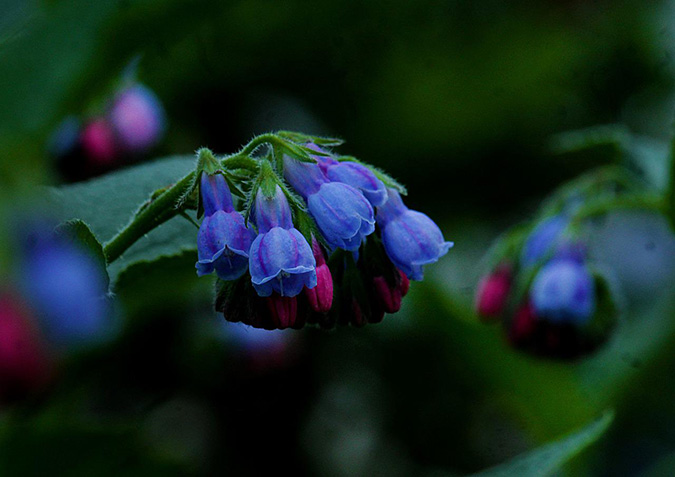
Image by Ирина Ирина from Pixabay
- Fertilizer: Grow comfrey around your other plants as a living mulch and chop-and-drop fertilizer.
- Wounds: Comfrey is second to none when it comes to encouraging wound healing.3)Forêt, Rosalee de la. “Comfrey.” HerbMentor. Accessed September 21, 2019. https://herbmentor.learningherbs.com/herb/comfrey/#marker-1080-14.
- Scars: Apply topically to help diminish or eliminate scars.4)Hoffmann, David. Medical Herbalism the Science and Practice of Herbal Medicine. Rochester, VT: Healing Arts Press, 2003.5)Pedersen, Mark. Nutritional Herbology: a Reference Guide to Herbs. Warsaw, IN: Whitman Publications, 2010.
- Fibromyalgia: Comfrey can be an effective part of your overall fibromyalgia management strategy.6)Edwards, Rebekah. “The Comfort of Comfrey: How ‘Knitbone’ Can Help Pain.” Dr. Axe, March 16, 2018. https://draxe.com/nutrition/herbs/comfrey/.
- Muscles and Joints: Use comfrey topically to relax sore, tight muscles and relieve arthritis pain. In some cases, it may work better than prescription drugs.7)Edwards, Rebekah. “The Comfort of Comfrey: How ‘Knitbone’ Can Help Pain.” Dr. Axe, March 16, 2018. https://draxe.com/nutrition/herbs/comfrey/.8)Johnson, Rebecca L., Steven Foster, and Andrew Weil. National Geographic Guide to Medicinal Herbs: the Worlds Most Effective Healing Plants. Washington, D.C.: National Geographic, 2014.
- Digestive Ulcerations: Comfrey’s combination of soothing mucilage and wound-healing allantoin make it an excellent treatment for ulceration of the digestive system.9)Jones, Patrick. “Comfrey Monograph.” The Homegrown School of Botanical Medicine. Accessed September 21, 2019. https://canvas.instructure.com/courses/1087997/pages/comfrey-monograph?module_item_id=11302739.
- Airway Congestion: When taken as a tea, comfrey has good expectorant properties.10)Jones, Patrick. “Comfrey Monograph.” The Homegrown School of Botanical Medicine. Accessed September 21, 2019. https://canvas.instructure.com/courses/1087997/pages/comfrey-monograph?module_item_id=11302739.
- Urinary Health: Comfrey helps to tone, sooth, and heal an irritated urinary system.11)Jones, Patrick. “Comfrey Monograph.” The Homegrown School of Botanical Medicine. Accessed September 21, 2019. https://canvas.instructure.com/courses/1087997/pages/comfrey-monograph?module_item_id=11302739.
- Eye Strain: Use a cold infusion of comfrey as an eyewash for strained or irritated eyes.
- Sitz Bath: Use comfrey tea as a soothing, healing soak for hemorrhoids, inflammations, postpartum tears, and post-surgery recovery.12)Jones, Patrick. “Comfrey Monograph.” The Homegrown School of Botanical Medicine. Accessed September 21, 2019. https://canvas.instructure.com/courses/1087997/pages/comfrey-monograph?module_item_id=11302739.
Medicinal Properties
The most well-known property of comfrey is its ability to help your body heal injuries. Not only does it speed up recovery on the surface level, but the primary constituent, allantoin, penetrates into the tissues of the body to speed healing of sprains, strains, and even broken bones.13)“The Safe Ways To Use Comfrey Oil.” Mercola.com. Accessed September 21, 2019. https://articles.mercola.com/herbal-oils/comfrey-oil.aspx.14)Staiger, Christiane. “Comfrey: A Clinical Overview.” Phytotherapy Research, 2012. https://doi.org/10.1002/ptr.4612.15)Barna, M., A. Kucera, M. Hladíkova, and M. Kucera. “Randomized Double-Blind Study: Wound-Healing Effects of a Symphytum Herb Extract Cream (Symphytum×Uplandicum Nyman) in Children.” Arzneimittelforschung 62, no. 06 (2012): 285–89. https://doi.org/10.1055/s-0032-1308981.16)Forêt, Rosalee de la. “Comfrey.” HerbMentor. Accessed September 21, 2019. https://herbmentor.learningherbs.com/herb/comfrey/#marker-1080-14. Not only does comfrey significantly speed up healing, but it also helps to facilitate proper healing. Comfrey can help minimize scaring, and may even be useful for fading established scars.17)Hoffmann, David. Medical Herbalism the Science and Practice of Herbal Medicine. Rochester, VT: Healing Arts Press, 2003.18)Pedersen, Mark. Nutritional Herbology: a Reference Guide to Herbs. Warsaw, IN: Whitman Publications, 2010.
You May Also Enjoy:
“7 Ways to Use Pine Trees for Food and Medicine, Year-round”
It should be noted that, while allantoin is the primary healing constituent in comfrey, it is not the only healing chemical. Extracted allantoin products are commercially available as health and beauty aids. However, these isolated extracts are not as effective as applications made from the whole plant. This would indicate that multiple phytochemicals, or likely the interaction of various phytochemicals, play an important role in the effectiveness of comfrey.19)Forêt, Rosalee de la. “Comfrey.” HerbMentor. Accessed September 21, 2019. https://herbmentor.learningherbs.com/herb/comfrey/#marker-1080-14.
Anecdotally, comfrey also seems to help speed up muscle recovery after exercise. This makes sense because muscle recovery is essentially the act of repairing damaged muscle fibers. But proof of comfrey’s effectiveness is not limited to anecdotal evidence. Medical research confirms comfrey’s value in treating pains and injuries. For example, in a double-blind study, researchers found comfrey to be approximately four times as effective at treating osteoarthritis of the knee as was the placebo.20)Grube, B., J. Grünwald, L. Krug, and C. Staiger. “Efficacy of a Comfrey Root (Symphyti Offic. Radix) Extract Ointment in the Treatment of Patients with Painful Osteoarthritis of the Knee: Results of a Double-Blind, Randomised, Bicenter, Placebo-Controlled Trial.” Phytomedicine 14, no. 1 (2007): 2–10. https://doi.org/10.1016/j.phymed.2006.11.006. Another study found that comfrey may be superior to diclofenac gel, a prescription anti-inflammatory drug.21)Predel, H.-G., B. Giannetti, R. Koll, M. Bulitta, and C. Staiger. “Efficacy of a Comfrey Root Extract Ointment in Comparison to a Diclo-Fenac Gel in the Treatment of Ankle Distortions: Results of an Observer-Blind, Randomized, Multicenter Study.” Phytomedicine 12, no. 10 (2005): 707–14. https://doi.org/10.1016/j.phymed.2005.06.001. The medical literature clearly supports comfrey’s traditional use as a healing plant.22)Staiger, Christiane. “Comfrey: A Clinical Overview.” Phytotherapy Research, 2012. https://doi.org/10.1002/ptr.4612
For a limited time, save big on TGN’s Biodynamic Comfrey Bundle—featuring our exclusive DIY Comfrey Salve Kit + 1/2 lb. of Demeter-certified, biodynamic dried comfrey.
Comfrey is also an excellent herb for reducing pain. Its anti-inflammatory, demulcent, and astringent attributes combine to reduce swelling, soothe, protect, and tone inured, angry tissues.23)Pedersen, Mark. Nutritional Herbology: a Reference Guide to Herbs. Warsaw, IN: Whitman Publications, 2010. Use it for musculoskeletal pain, nerve pain, bites, stings, burns, sprains, strains, and just about any other pain. It’s astringency also helps to stop bleeding.24)Hoffmann, David. Medical Herbalism the Science and Practice of Herbal Medicine. Rochester, VT: Healing Arts Press, 2003.
For those who feel comfortable taking comfrey internally, it can also be helpful in relieving discomfort from, and healing, ulcers and injuries related to irritable bowel syndrome.25)Chevallier, Andrew. DK Natural Health: Encyclopedia of Herbal Medicine. New York: DK Pub., 2000. Internal use also allows it to reduce respiratory irritations while working as an expectorant.26)Jones, Patrick. “Comfrey Monograph.” The Homegrown School of Botanical Medicine. Accessed September 21, 2019. https://canvas.instructure.com/courses/1087997/pages/comfrey-monograph?module_item_id=11302739.
You May Also Enjoy:
“Head Wound Healing of Tissue Defects Using Herbs”
The urinary system can also benefit from internal use. The demulcent and astringent properties of comfrey help to soothe and tone the kidneys and bladder, while comfrey’s vulnerary properties help to heal damage in these areas.27)Jones, Patrick. “Comfrey Monograph.” The Homegrown School of Botanical Medicine. Accessed September 21, 2019. https://canvas.instructure.com/courses/1087997/pages/comfrey-monograph?module_item_id=11302739. But to be fair, internal use of comfrey will spread its healing properties to every part of the body. One exception might be the liver. For more detailed information on this, see the Precautions and Contraindications section below.
Those who are hesitant about using comfrey internally may still find it useful in some near-internal applications. A comfrey tea or decoction can be used in the mouth as a rinse or gargle. It’s useful for healing bleeding gums, soothing a hoarse voice, and relieving pain from throat infections.28)Pedersen, Mark. Nutritional Herbology: a Reference Guide to Herbs. Warsaw, IN: Whitman Publications, 2010. Comfrey also can also be used as a soothing and healing eyewash. Comfrey tones and soothes the muscles and other tissues of the eye, while also helping to repair any damage.29)Jones, Patrick. “Comfrey Monograph.” The Homegrown School of Botanical Medicine. Accessed September 21, 2019. https://canvas.instructure.com/courses/1087997/pages/comfrey-monograph?module_item_id=11302739. The cornea of the eye is often said to be the fastest-healing tissue in the human body. Imagine how it can heal with the help of comfrey!
Nutritional Properties
Comfrey is a nutrient accumulator. Its roots reach far down into the earth to pull up minerals. It’s an excellent source of calcium, manganese, niacin, potassium, riboflavin, selenium, silicon, Vitamin A, and Vitamin C.
Unfortunately, eating the plant may be harmful to your liver. However, some people have apparently eaten comfrey without issue. Susun Weed has used it in nourishing herbal infusions for years, and it seems to have not bothered her at all. Nevertheless, the topic of comfrey consumption is a heated debate, with herbalists taking positions on all sides. See the Precautions and Contraindications section below for more detailed information.
Comfrey Preparation and Usage
Be sure to read the Precautions and Contraindications section before using comfrey internally.
Oil
There are two popular ways to make comfrey oil. The slower method involves packing a glass jar with comfrey leaves and then pouring oil over them. Dry leaves work best with this method. They have less moisture, which lowers the chance of spoilage. Screw a lid on the jar, place it in a paper bag to protect it from direct sun exposure, and place it on a warm windowsill. After two weeks, strain out the herbs and rebottle the oil.
For the faster method, place your comfrey and oil in a pan and heat them on low until the oil takes on the color of the herbs, around 30 minutes to an hour. Strain out the herbs and bottle the oil.
You May Also Enjoy:
“Companion Planting Favorites (Your Answers to the Question of the Month!)”
Comfrey oil can be store at room temperature, but will last much longer in refrigeration.
Apply the oil liberally to aches, pains, injuries, or other areas as desired. An empty roll-on deodorant bottle makes a great applicator for using the oil without getting your hands messy.
Decoction
Use 1-3 teaspoons of dried comfrey root per 1 cup of water. Bring the water to a boil, then reduce the heat and let it simmer for 10-15 minutes. Drink this up to three times a day.30)Hoffmann, David. Medical Herbalism the Science and Practice of Herbal Medicine. Rochester, VT: Healing Arts Press, 2003. If you do not want to ingest the decoction, you can use it as a mouthwash or gargle for infections, dry mouth, sore throat, and bleeding gums.
Tea/Infusion
For a hot infusion, pour 1 cup of boiling water over 2 teaspoons of comfrey and let it steep for around 10 minutes, until it is cool enough to drink. For cold infusions, pour cold water over the comfrey and let it stand for 6-8 hours. Hot infusions are faster, but cold infusions are better at drawing out the mucilage. Use whichever is most appropriate for your situation.
You May Also Enjoy:
“40+ Natural Cold and Flu Remedies”
Remember, drinking isn’t the only thing you can do with comfrey tea. It also works great when applied topically. Use a spray bottle to cover a desired area several times a day. This method is great for hard-to-poultice areas. Another option would be to use the tea in a sitz bath. It’s useful for hemorrhoids, postpartum tears, inflammations, and other pains in your personal areas.
Lotion
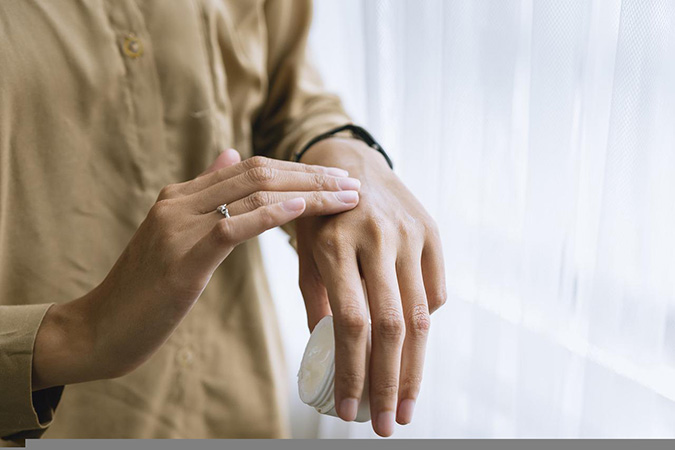
Image by iqbal nuril anwar from Pixabay
You can combine comfrey oil and comfrey tea into one easy-to-use, super-smooth application. Start with your infused oil and add 1 ounce of beeswax per cup of oil. Heat this with a double boiler and stir until the wax is thoroughly incorporated. Take this off of the heat and add 1 cup of comfrey tea for every cup of oil you used. Blend it with a hand mixer until it gains a texture you’re happy with. Unlike a salve, a lotion will stay fairly soft in the refrigerator.
Tincture
Place the plant material in a glass jar. You can use crushed fresh leaves, chopped-up fresh roots, or powdered comfrey. Pour alcohol over the herbs so that they are covered by an inch or two of liquid. Close the lid and shake it all up. Label the jar, and place it in a dark, warm location for at least 2 weeks, although more time is better. Shake the jar up once a day for the first week or so. After 2 weeks (or longer), strain out the herbs and rebottle your new tincture.
You May Also Enjoy:
Comfrey root tincture can be used in 2-4 ml quantities, up to 3 times a day.31)Hoffmann, David. Medical Herbalism the Science and Practice of Herbal Medicine. Rochester, VT: Healing Arts Press, 2003. If you’re concerned with PAs, remember that you can also use the tincture topically, as a liniment. If you’re sure you will only use it topically, you can save money by using rubbing alcohol instead of more expensive choices, like vodka. Just make sure you label the jar clearly so no one accidentally swallows rubbing alcohol!
Herbal Bath

Image by Jesse Bridgewater from Pixabay
Put powdered or crushed comfrey into a clean sock or cloth bag and tie it so that water from the faucet will flow through it. Turn the hot water on all the way and let the tub fill to about halfway. Then, adjust the water temperature as desired. Soak as long as you like, enjoying the soothing, pain-relieving, and healing properties of comfrey.
You May Also Enjoy:
I do have one caution. The mucilaginous nature of comfrey may start to clog up your cloth bag, causing water to be forced out the top of the bag, pulling herbs with it, and generally making a mess in your bath. This doesn’t hurt anything, but it is a bit unsightly. If you notice this starting to happen, just remove the bag, tie it off, and let it float in your bath like a tea bag.
Poultices
You can make a comfrey poultice with the leaf or the root. Crush or powder the plant material and mix with water to form a paste. Apply this thickly and liberally to the desired area. Wrap it with cloth or a bandage to hold it in place. Comfrey poultices should be left in place for several hours (overnight is ideal).
For convenient, ready-made poultices, fill a blender with comfrey leaves and add enough water to blend it into a slurry. Lay out a cloth and pour the mixture onto it. Cover this with another cloth and slide it into a zipper-lock bag. Place this flat in your freezer. You can stack several of these on top of each other and have them ready as needed.
You May Also Enjoy:
Comfrey poultices are excellent for wounds, sores, bruises, bites, pain, arthritis, and even broken bones. However, you should not use comfrey on a deep puncture wound. See the Precautions and Contraindications section for more details.
Comfrey poultices are fine to use with animals, too. If you’re having trouble keeping the poultice in place, try spraying the area with comfrey tea using a spray bottle.
Garden Applications
Not only is comfrey great for us, but it’s also great for our gardens. Comfrey can act as a living mulch, shading out competing weeds and keeping moisture in the soil. You can use it as a chop-and-drop fertilizer too. Just cut it down and let it decompose on the ground to nourish your other plants. Comfrey is so vigorous, you can do this a few times a year. And don’t forget that when you’re done making any of the medicinal applications above, you can use the leftover plant material as free fertilizer for your garden plants.
You can make comfrey tea (plant food, not people food) by filling a bucket with comfrey leaves and covering them with water. Let it sit out for a month or more until it smells like death warmed over. Some give the full-strength brew to their plants. But you can also dilute it to spread the nutrients around. Be sure to filter the liquid well if you intend to use it in a sprayer.
You May Also Enjoy:
“Weeds: What They Tell Us and Why You Should Care”
“5 Keys to Food Security in Extreme Weather, for Home Gardeners”
Precautions and Contraindications
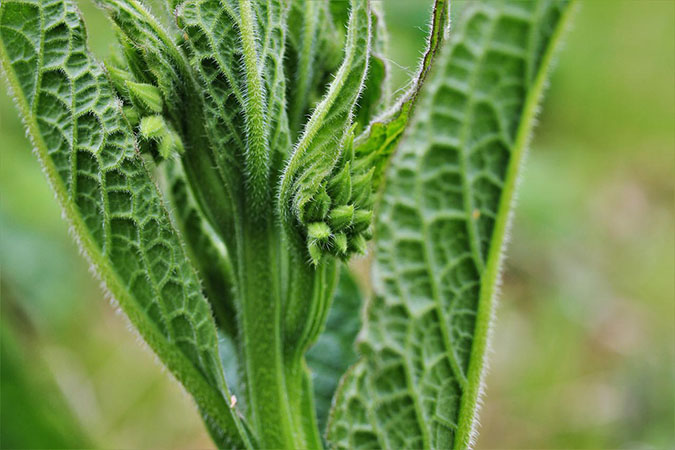
Image by Carola68 Die Welt ist bunt…… from Pixabay
Ingestion of comfrey is controversial, with views ranging from “it’s harmless” to “it’s too dangerous to ever use internally.” The issue centers around pyrrolizidine alkaloids (PAs). PAs are plant compounds which can range from harmless to deadly. The PAs in comfrey are thought to be hepatoxic (toxic to the liver).
In one study, rats were force-fed egregiously large amounts of comfrey. Some of these rats were later shown to develop liver tumors.32)Jones, Patrick. “Comfrey Monograph.” The Homegrown School of Botanical Medicine. Accessed September 21, 2019. https://canvas.instructure.com/courses/1087997/pages/comfrey-monograph?module_item_id=11302739. The quantities consumed were entirely unrealistic and do not represent a true-to-life use of the herb. But humans are not rats. We do not always react to chemicals in the same ways. Pigs were fed the same proportion of comfrey and had no ill effects.33)Jones, Patrick. “Comfrey Monograph.” The Homegrown School of Botanical Medicine. Accessed September 21, 2019. https://canvas.instructure.com/courses/1087997/pages/comfrey-monograph?module_item_id=11302739. On the other end of the spectrum, horses appear to be very sensitive to PAs. So when it comes to PAs, are we more like rats, pigs, or horses?
There simply haven’t been human safety trials with comfrey. This is no doubt partially due to ethical and safety concerns. Comfrey’s PAs may very well be dangerous to the liver. But we must remember that the presence of liver damage does not automatically mean that comfrey was to blame. We must also consider lifestyle choices, pharmaceutical use, and pre-existing conditions.
You May Also Enjoy:
“15 Natural Antibiotic Alternatives”
“Oatstraw Benefits: Stress Reliever, Love Potion, Brain Booster, and More”
So is comfrey safe to use internally or not? It’s still up for debate. Some herbalists recommend erring on the side of caution and avoiding internal use of comfrey. Some allow for short-term internal use with mature leaves, but never the root. And some, like Susan Weed, have been taking and recommending nourishing herbal infusions of comfrey for years with no apparent ill effects.
The truth is, life is complicated. Some people may be more vulnerable or more resistant to PAs. Different species of Symphytum plants have different amounts of different types of PAs. Surprisingly, some may not have any PAs at all.34)Hoffmann, David. Medical Herbalism the Science and Practice of Herbal Medicine. Rochester, VT: Healing Arts Press, 2003. Various preparation methods may impart greater or lesser levels of PAs. And other herbs, pharmaceuticals, and lifestyle choices may also have an effect on your body’s ability to resist potential damage from PAs.
People with compromised liver health should likely avoid internal use of comfrey. Babies and small children should also avoid internal use, as should pregnant and nursing mothers. If you do ingest comfrey, you would probably benefit from taking it with liver protecting herbs, such as milk thistle or cleavers.
You May Also Enjoy:
“How to Love Thistles When You’ve Been Hurt Before”
“From Dinner to Detox: 15+ Ways to Get Healthy With Cleavers”
“19 Benefits of Hibiscus: Blood Pressure Regulator, Cancer Fighter, Liver Protector, and Much More!”
Comfrey’s PAs are not well absorbed by the skin. External use is generally accepted to be safe by all but the most extreme comfrey-phobic herbalists, though some will advise only using comfrey that has been purified of its alkaloid content. Topical comfrey use is extremely well tolerated, even on broken skin.35)Kucera, Alexander, Milos Barna, Simona Holcova, Ondrej Horacek, Marie Hladiková, and Bertram Ottillinger. “Tolerability and Effectiveness of an Antitrauma Cream with Comfrey Herb Extract in Pediatric Use with Application on Intact and on Broken Skin.” International Journal of Pediatrics and Adolescent Medicine 5, no. 4 (2018): 135–41. https://doi.org/10.1016/j.ijpam.2018.11.002.
Comfrey should not be used on a deep puncture wound. This could cause the surface of the wound to heal over before the bottom of the wound, potentially creating an abscess. You should also not use comfrey with a dirty wound, for the same reason. It will trap dirt and puss under the rapidly healing skin.
Plant ID
Comfrey grows up to 3-feet tall and has large, broad leaves. The leaves are hairy and highly textured. The leaf hairs are actually a bit on the prickly side and can occasionally get stuck in your skin. But they’re not nearly as bad as cactus needles. Gloves are optional.
The roots are black on the outside, but a creamy white on the inside.
The flowers are bell-shaped and tend to be purple. However, various species and varieties can have other colors, including white and yellow.
The various comfrey species can be confused for one another. Most, if not all, of them share medicinal properties to some degree. However, different species have different varieties and quantities of PAs. If you are unsure of your identification, you may wish to buy comfrey seeds from a reputable retailer.
Other look-alikes are wild comfrey (Cynoglossum virginianum) and houndstongue (Cynoglossum officinale). These are in the same family as comfrey, but fall into a different genus. They share a similar shape and texture with comfrey and are medicinally very similar. However, their levels of PAs are significantly higher. Internal use is not recommended.
You should always be completely sure that you have the right plant before harvesting it.
Where Comfrey Grows and Where to Find It
Comfrey is native to Europe and Asia, but has been cultivated in (and subsequently escaped from) much of the temperate world. It isn’t picky about sunlight, growing in full sun to full shade. It enjoys frequent access to water, though you will sometimes find individuals in drier areas. Comfrey also enjoys nitrogen-rich soil, which fuels its rapid growth, but it will succeed in most soils.
Comfrey will tolerate cold well and will come back after deep, icy winters. Unfortunately, prolonged heat can make it struggle. It enjoys USDA zones 3-9, but can be coaxed a bit further in either direction. It can be grown fairly easily from seed and is criminally easy to propagate from root cuttings.
You May Also Enjoy:
“Pharmaceuticals vs. Herbal Medicine: 3 Vital Differences”
“How to Make Your Own Tinctures, Salves, and Essential Oils”
“Case Study: Head Wound Healing of Tissue Defects Using Herbs”
Once it’s established, comfrey is notoriously difficult to get rid of. Go ahead and try to dig it all up. If you leave any bit of root in the ground, you’ll have a healthy, mature plant in no time. If you hit it with the tiller, you’ll have a whole village of comfrey plants coming up.
Even if you plant it in a carefully selected area, its tiny, black seeds can spread near and far, sending up new plants all over your yard and garden. For some, this is a great boon. For others, it may be a problem. If you’re trying to avoid comfrey overload, you could try planting Russian comfrey. That’s a hybrid of S. officinalie and S. uplandicum. It’s medicinally very similar, if not identical, and cannot reproduce by seed. However, you can still propagate it by root cuttings.
How and When to Harvest Comfrey
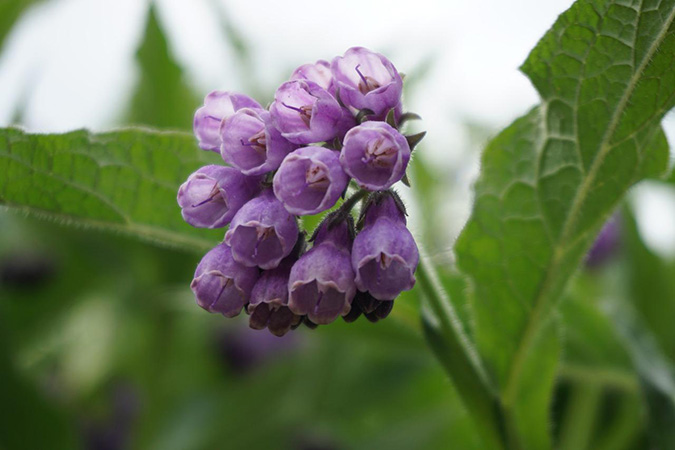
Image by Claudiakatharina from Pixabay
Leaves can be harvested at any time they are present, but are best when large and mature. Larger, mature leaves also have lower concentrations of PAs. Gloves will help you avoid the scratchy leaf hairs, but are not required.
The roots can be harvested at any time. Over-harvesting is usually not a concern with comfrey. Digging up the root can actually help spread it by encouraging a new plant to grow from each root fragment that got left in the ground.
Leaves and roots can be dried and powdered for storage. Fresh leaves and roots can also be stored in the freezer.
What Do You Think?
Do you have any comfrey stories or formulas you’d like to share? Let us know in the comments what you think about the king of the vulneraries!
You May Also Be Interested In:
- Are you at stage 3? Learn the 7 stages of becoming a Medicine Woman or Medicine Man.
- Free e-Book: “Garlic: Your First Home Medicine”
- Free e-Book: “Top 10 Immune-Boosting Herbs”
- How to make Fire Cider (a.k.a. Four Thieves Tonic)
- Fight your next infection NATURALLY. “Treating Infections Without Antibiotics”
- Your teeth can heal themselves! “Alternatives to Dentists”
- Boost your immune system and fight off colds! Make your own elderberry syrup.
- Free e-Book: “The Ancient Art of Raw Vinegars”
- The #1 way to improve your health is to kick the sugar habit. Our free 7 Day Sugar Challenge can help!
______________________________
Psst! Our Lawyer Wants You to Read This Big, Bad Medical Disclaimer –> The contents of this article, made available via The Grow Network (TGN), are for informational purposes only and do not constitute medical advice; the content is not intended to be a substitute for professional medical advice, diagnosis, or treatment. Always seek the advice of a qualified health care provider with any questions you may have regarding a medical condition. If you think you may be suffering from any medical condition, you should seek immediate medical attention. You should never delay seeking medical advice, disregard medical advice, or discontinue medical treatment because of information provided by TGN. Reliance on any information provided by this article is solely at your own risk. And, of course, never eat a wild plant without first checking with a local expert.
The Grow Network is a participant in the Amazon Services LLC Associates Program, an affiliate program designed to provide a means for our team to earn fees for recommending our favorite products! We may earn a small commission, at no additional cost to you, should you purchase an item after clicking one of our links. Thanks for supporting TGN!

Scott Sexton is a TGN Trailblazer, a highly experimental gardener, an unrelenting weed-eater, and a largely non-profit herbalist (much to his wife’s chagrin). When Scott is not teaching foraging classes, testing out theories in the garden, or grazing in the forest, he can be found at his Facebook page, “A Forager’s Guide to the Zombie Apocalypse.”
References
| ↑1, ↑3, ↑16, ↑19 | Forêt, Rosalee de la. “Comfrey.” HerbMentor. Accessed September 21, 2019. https://herbmentor.learningherbs.com/herb/comfrey/#marker-1080-14. |
|---|---|
| ↑2, ↑8 | Johnson, Rebecca L., Steven Foster, and Andrew Weil. National Geographic Guide to Medicinal Herbs: the Worlds Most Effective Healing Plants. Washington, D.C.: National Geographic, 2014. |
| ↑4, ↑17, ↑24, ↑30, ↑31, ↑34 | Hoffmann, David. Medical Herbalism the Science and Practice of Herbal Medicine. Rochester, VT: Healing Arts Press, 2003. |
| ↑5, ↑18, ↑23, ↑28 | Pedersen, Mark. Nutritional Herbology: a Reference Guide to Herbs. Warsaw, IN: Whitman Publications, 2010. |
| ↑6, ↑7 | Edwards, Rebekah. “The Comfort of Comfrey: How ‘Knitbone’ Can Help Pain.” Dr. Axe, March 16, 2018. https://draxe.com/nutrition/herbs/comfrey/. |
| ↑9, ↑10, ↑11, ↑12, ↑26, ↑27, ↑29, ↑32, ↑33 | Jones, Patrick. “Comfrey Monograph.” The Homegrown School of Botanical Medicine. Accessed September 21, 2019. https://canvas.instructure.com/courses/1087997/pages/comfrey-monograph?module_item_id=11302739. |
| ↑13 | “The Safe Ways To Use Comfrey Oil.” Mercola.com. Accessed September 21, 2019. https://articles.mercola.com/herbal-oils/comfrey-oil.aspx. |
| ↑14 | Staiger, Christiane. “Comfrey: A Clinical Overview.” Phytotherapy Research, 2012. https://doi.org/10.1002/ptr.4612. |
| ↑15 | Barna, M., A. Kucera, M. Hladíkova, and M. Kucera. “Randomized Double-Blind Study: Wound-Healing Effects of a Symphytum Herb Extract Cream (Symphytum×Uplandicum Nyman) in Children.” Arzneimittelforschung 62, no. 06 (2012): 285–89. https://doi.org/10.1055/s-0032-1308981. |
| ↑20 | Grube, B., J. Grünwald, L. Krug, and C. Staiger. “Efficacy of a Comfrey Root (Symphyti Offic. Radix) Extract Ointment in the Treatment of Patients with Painful Osteoarthritis of the Knee: Results of a Double-Blind, Randomised, Bicenter, Placebo-Controlled Trial.” Phytomedicine 14, no. 1 (2007): 2–10. https://doi.org/10.1016/j.phymed.2006.11.006. |
| ↑21 | Predel, H.-G., B. Giannetti, R. Koll, M. Bulitta, and C. Staiger. “Efficacy of a Comfrey Root Extract Ointment in Comparison to a Diclo-Fenac Gel in the Treatment of Ankle Distortions: Results of an Observer-Blind, Randomized, Multicenter Study.” Phytomedicine 12, no. 10 (2005): 707–14. https://doi.org/10.1016/j.phymed.2005.06.001. |
| ↑22 | Staiger, Christiane. “Comfrey: A Clinical Overview.” Phytotherapy Research, 2012. https://doi.org/10.1002/ptr.4612 |
| ↑25 | Chevallier, Andrew. DK Natural Health: Encyclopedia of Herbal Medicine. New York: DK Pub., 2000. |
| ↑35 | Kucera, Alexander, Milos Barna, Simona Holcova, Ondrej Horacek, Marie Hladiková, and Bertram Ottillinger. “Tolerability and Effectiveness of an Antitrauma Cream with Comfrey Herb Extract in Pediatric Use with Application on Intact and on Broken Skin.” International Journal of Pediatrics and Adolescent Medicine 5, no. 4 (2018): 135–41. https://doi.org/10.1016/j.ijpam.2018.11.002. |
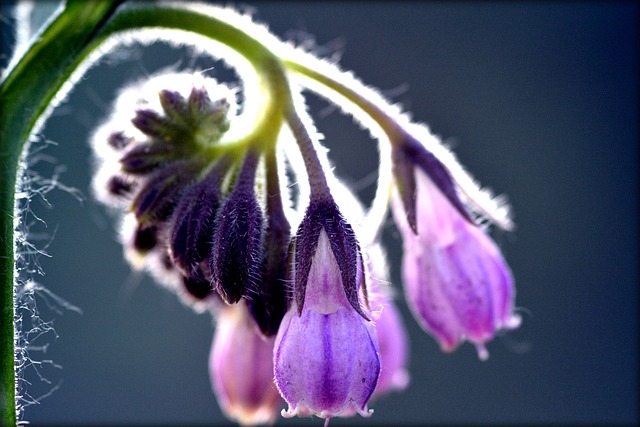
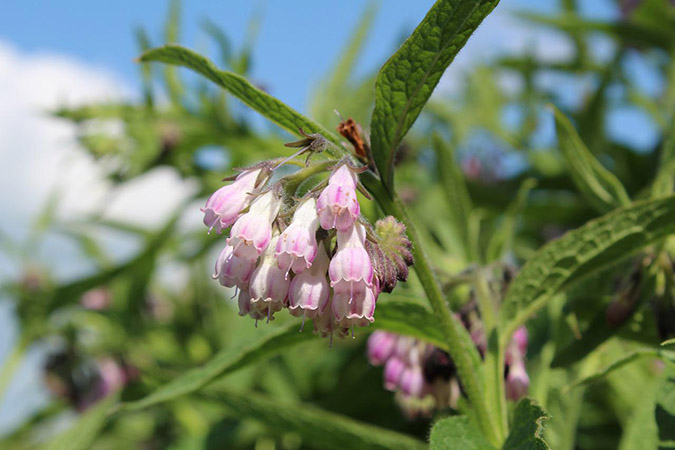
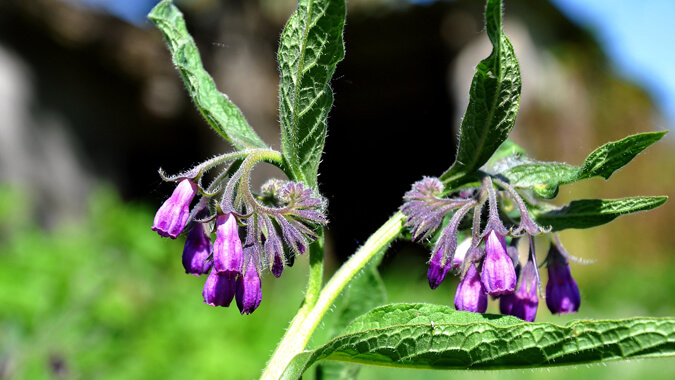
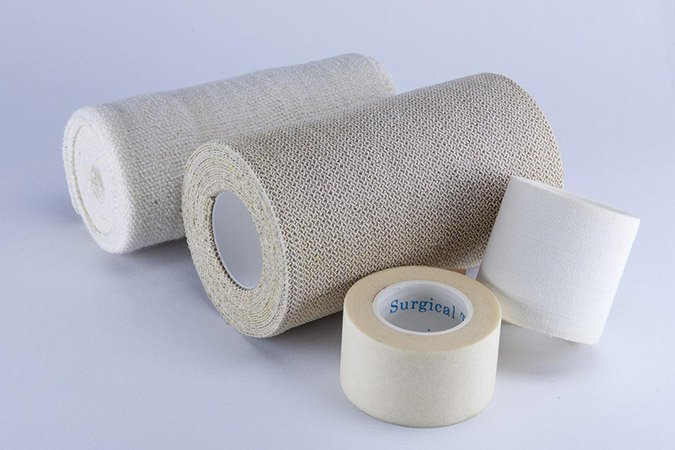
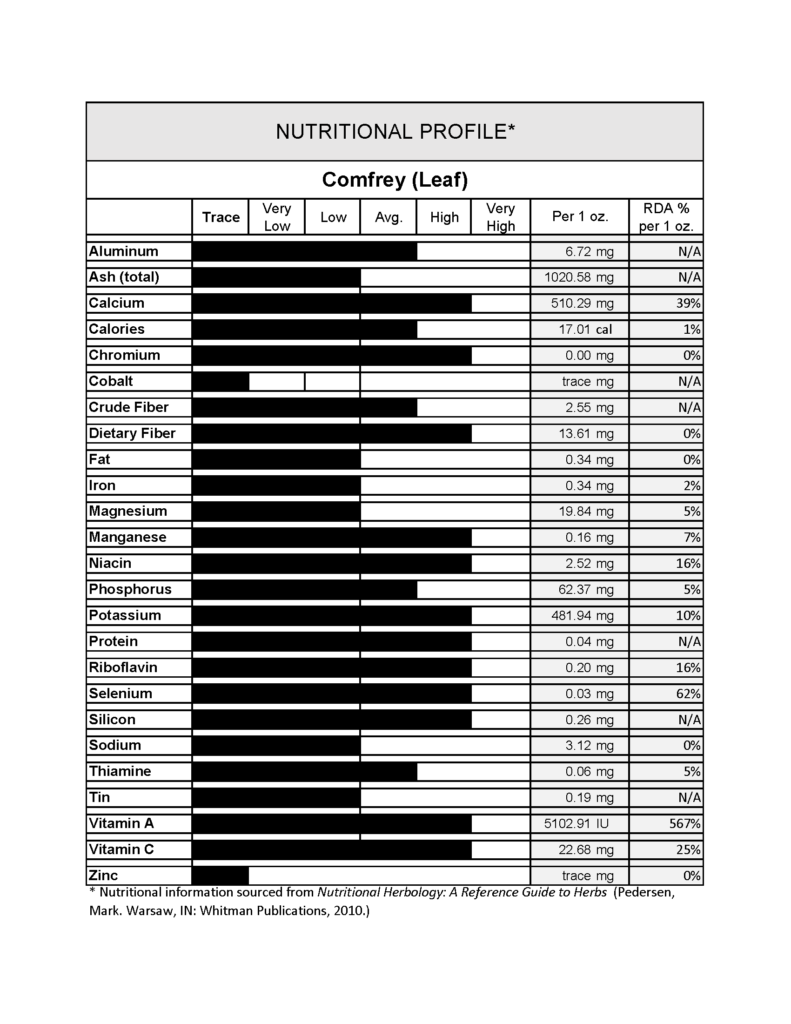
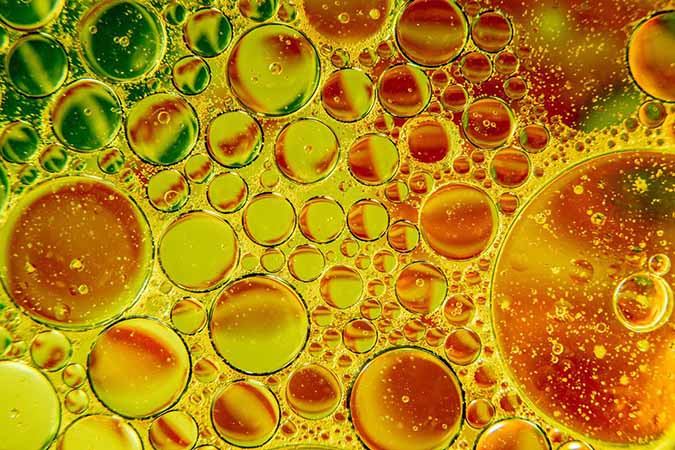
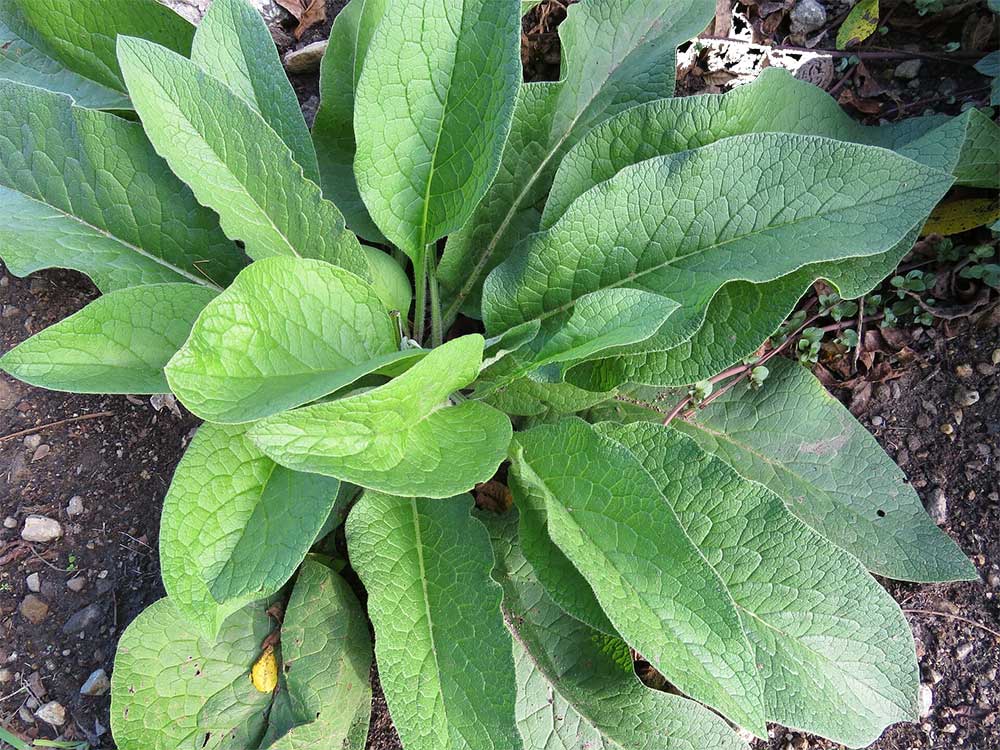
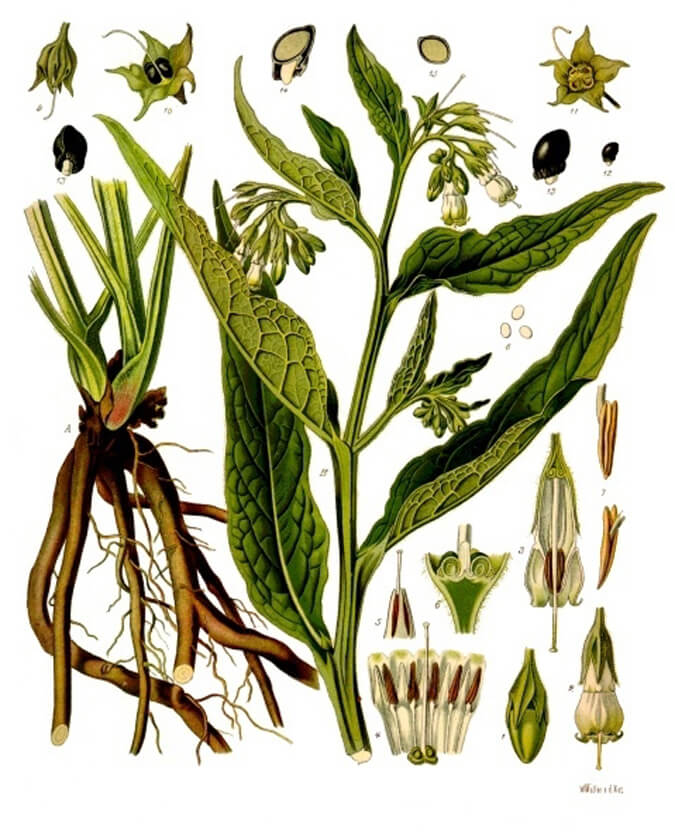







COMMENTS(5)
Hey Scott! This is such a great & thorough article. One addition I’d make is that it is great forage for livestock. Cattle & chickens love it, so I’ve heard. I assume other livestock (pigs, goats, sheep, etc.) would feel the same way. I have some comfrey plants that I hope to plant soon. It should certainly be popular with everyone here on our place. 🙂
Excellent article. My mother-in-law liked to drink comfrey for tea and would often prepare it for us. Then she heard about the alleged danger of consuming comfrey and quit using comfrey tea.
Good article. I have a question, if anyone knows the answer.
I have a friend with a tooth that is hurting her badly. She needs to get to a dentist, but has no money to pay him.
This article says comfrey can heal bones, cause meat to grow together, soothe the eyes, relax muscles, etc. Can it draw out toxins from an enflamed tooth and heal it? Teeth are bones too.
TO: Katherine L Haag …If you do not get an answer here try earthclinic for your resolve regarding your friend. This site “grow network” is phenomenal as well as earthclinic. Good health to all on this earth.
Thank you for such a thorough article. I love, love Comfrey!
One of the reasons for the sudden fears around the ingestion of Comfry could be post the Chernobyl disaster. Comfry absorbs great quantities of nutrients in the soil. If the soil in the regions around Europe were contaminated then it showed up in Comfry. We, in the Southern Hemisphere, were given very strict warnings not to sell any Comfry products until a local producer had their products thoroughly tested and passed.
Also, for years I have used comfrey to draw puss from a wound, even ears with very good results. Again, maybe the reason we are being advised not to use it on open wounds is that it wasn’t used in its whole form. I know that it has fibrinogen (this forms the spider web-like substance that forms scabs). Yet I haven’t had an experience where the scabbing has formed before all the pus has been pulled. This means checking the wound often and cleaning it thoroughly before placing a clean poultice back in place.
I would like to have your thoughts on this.